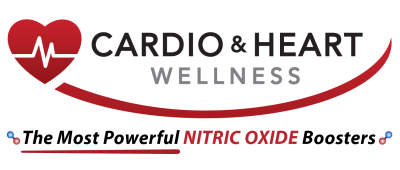Inadequate Vitamin C Initiates High Blood Pressure's Plaque-Building Activity

High blood pressure is a well-known risk factor for the development of atherosclerotic lesions in the arteries (Stamler et al., 1985; Hjerkinn et al., 2005; Kempler, 2005). What is not so well known is that studies show that high blood pressure requires an accompanying lack of arterial Vitamin C to initiate the damaging affects of arterial narrowing and blockage.
In order for an artery to maintain normal integrity over time in the presence of elevated (or even normal) blood pressure, the collagen content in all three layers of the blood vessel must be optimal and high quality. Sufficient amounts of Vitamin C must be taken regularly in order for this to take place (Blanck and Peter Kofsky, 1975; Wendt et al., 1997; May and Qu, 2005).
When Vitamin C Levels Remain Low for Long Enough
The first change that begins to take place in the blood vessel is known as a “degenerative” change. Microscopic pictures of such tissue show a lessening of structural organization including a lessening in the amount of collagen. In addition, the collagen still present can be expected to be mechanically inferior and not as strong as normal collagen. The degradation of collagen quality can occur even if the collagen was originally created in the presence of adequate Vitamin C.
Lanman and Ingalls (1937) were able to show that the healed wounds in guinea pigs deprived of Vitamin C had “greatly inferior tensile strength” compared to the healed wounds of animals given adequate Vitamin C. Stolman et al. (1961) were able to show that normally formed collagen showed an early breakdown when Vitamin C supplementation was withdrawn from guinea pigs.
Abt et al. (1959) showed that vitamin C is essential for both normal tissue healing and the maintenance of previously formed scar tissue. Pirani and Levenson (1953) also found that scar tissue is more sensitive than normal connective tissue to a Vitamin C deficiency. This finding directly implies that maintenance of the atherosclerotic, “scarred” blood vessel requires even more Vitamin C to maintain its integrity, however impaired, than if it had developed normally in the presence of adequate amounts of Vitamin C.
The presence and quality of collagen is probably the most significant factor in determining how mechanically strong a healed wound, or a blood vessel, will be.
Plaque is a type of Arterial Scar Tissue
When there are abnormal amounts of mechanically inferior collagen in a given area of a blood vessel wall, some degree of breakdown and degeneration of the normal tissue structure can be expected as one of the first detectable changes under a microscope.Even larger levels of Vitamin C are essential for proper healing of damaged tissues and maintenance of scar tissue.
Logically, if a normal Vitamin C status could be regained at the point of early breakdown or degeneration of the collagen substructure of the blood vessel, a complete or near-complete healing of the blood vessel could be anticipated. However, when the levels of Vitamin C remain low over a prolonged period of time, adequate amounts of quality collagen and other important proteins simply cannot be synthesized, and the body proceeds to compensate in the only way it can.
If no compensatory mechanism existed, the blood vessel would relentlessly continue its degeneration until it became so weak that it eventually failed, with progressive enlarging of the vessel’s diameter (dilatation), leaking of blood, and/or frank rupture.
To prevent this ultimately lethal outcome, the body starts a compensatory mechanism known as a “proliferative” reaction. Simply put, without the normal amounts of quality collagen being present in the blood vessel wall the body has to find a way to strengthen the blood vessel wall. The body accomplishes this wall strengthening by stimulating intense cellular proliferation, typically with fibroblasts, in the intima and the immediately adjacent media.
As this cellular multiplication proceeds, the blood vessel wall physically thickens over areas that had been depleted of collagen in the form of an evolving atherosclerotic plaque. This thickening is the body’s way of focally fortifying the blood vessel wall in the absence of normal collagen formation, as the eventual result of Vitamin C deficiency in that specific location.
Ironically, the mature fibrous plaque of atherosclerosis actually has a high concentration of collagen in it (Levene and Poole, 1962). As just discussed, in order to strengthen areas of collagen-deficient vessel walls, the body stimulates the mass production of fibroblasts.
Fibroblasts
Fibroblasts are the cells that produce collagen and these newly created cells start to cover areas of the internal surface of the arterial wall, putting them in direct contact with the blood flow. This proximity to the blood flow undoubtedly allows these newly created “collagen factories” to better grab circulating Vitamin C than if they had to rely on the Vitamin C penetrating the deeper reaches of the arterial wall. And, even while collagen production is increasing in the plaque itself, it still remains depleted in the arterial wall as long as overall Vitamin C levels in the body re main depressed.
Crawford and Levene (1953) were able to demonstrate that the media of the arterial wall was physically thinned and decreased in mass, even when directly under an area of atherosclerotic thickening of the blood vessel wall. This supports the concept that deeper areas of the atherosclerotic blood vessel wall remain collagen-poor even when the compensatory fibrous thickenings atop such areas are collagen-rich.
Not surprisingly, the actual composition of the fibrous atherosclerotic thickening is variable, depending upon the variety of risk factors present. After the thickening is initiated by the cellular proliferation, more mature, obstructive blockages in the artery can then evolve in a number of different ways.
These advanced lesions are known as fibrous plaques, and they can subsequently become sites of hemorrhage, complete blood vessel blockage, and/or calcification. Furthermore, whenever there is the slightest degree of hemorrhage or even leakage of blood into an atherosclerotic plaque, further stimulation of fibroblastic growth can be anticipated, as the presence of hemoglobin is known to induce such growth (Baker, 1929). Certainly, it has been established that hemorrhage into a plaque (intraplaque) will lead to overall plaque progression and growth (Corti et al., 2004). This is likely one of the reasons why advanced atherosclerotic plaques are more difficult to completely reverse than early lesions.
Strongly supporting the concept that high blood pressure can initiate atherosclerosis and promote its continued development by overtaxing collagen-depleted blood vessels walls – is the fact that advanced atherosclerosis does not typically develop in arteries within the heart (intramyocardial coronary arteries) (Cheng, 2000; Scher, 2000). An intramyocardial coronary artery is one that courses directly through the heart muscle itself.
The diseased coronary arteries that are the focus of a bypass surgery or a balloon angioplasty procedure are always “epicardial,” meaning that they course over the exterior of the heart, with only their intramyocardial branches dipping into the heart muscle. This means that the epicardial coronary artery has only the resistance offered by the blood vessel wall itself to counter the ongoing burden/trauma of elevated blood pressure.
High blood pressure can initiate and promote continued plaque build-up by overtaxing collagen-depleted blood vessels.
Consistent with this assertion is the fact that the distribution of atherosclerotic plaques in the epicardial coronary arteries is concentrated in the areas of highest physical stress, such as the points of bifurcation and branching (Thubrikar and Robicsek, 1995). The intramyocardial coronary artery, however, has the dense, strong heart muscle completely surrounding it. Even when such an artery is depleted of its normal content of collagen, the artery is not in danger of significant secondary dilatation, with subsequent weakening, leakage, and / or rupture. Because this danger does not exist, the body does not have the need to institute any compensatory measures to prevent it from happening, and no significant cellular proliferative response subsequently develops, even though the intramyocardial coronary artery might be low on collagen as well. This is also supported by the fact that non-obstructive endothelial disease and early atherosclerosis can readily be found in intramyocardial arteries (Cooper and Heagerty, 1998; Cantin et al., 2002; Hu et al., 2005). However, high-grade, fully evolved lesions do not typically develop in those vessels as they do in the epicardial coronary arteries. Therefore, it is reasonable to postulate that high blood pressure is really only a significant risk factor for atherosclerosis when three conditions are met:
- Vitamin C deficiency has been present for a long enough period of time,
- The levels of collagen and other important structural proteins in the arterial walls are adequately depleted, and
- No additional external support around the blood vessel wall is available, as with the epicardial coronary artery (Robicsek and Thubrikar, 1994).
Vitamin C Deficiency Shown to Cause and Sustain High Blood Pressure
There is another reason high blood pressure needs a chronic Vitamin C deficiency in order to express its full potential as a risk factor for atherosclerosis. Vitamin C deficiency has been shown to play an integral role in the actual causation and sustaining of high blood pressure (Bates et al., 1998; Fotherby et al., /7.:(\2000; May, 2000). Consistent with this, Galley et al. (1997) found that a combined antioxidant supplementation that included Vitamin C was effective in reducing blood pressure.
Furthermore, Duffy et al. (1999) demonstrated in a double-blind, placebo-controlled study that Vitamin C was effective as a monotherapy in lowering the blood pressure of hypertensive patients. Studies have also shown that higher blood levels of Vitamin C are clearly related to lower blood pressure in humans (Moran et al., 1993; Ness et al., 1996; Ness et al.,1997;Sakai et al., 1998).
High Levels of Vitamin C Shown Effective in Lowering Blood Pressure in Humans.
Vitamin C Deficiency
Vitamin C Deficiency facilitates both the elevation of blood pressure itself as well as the susceptibility of the blood vessel wall to be damaged by that elevated pressure.
Adequate Vitamin C
Adequate Vitamin C levels not only make the development of significantly high blood pressure unlikely, but normal levels of collagen in the blood vessel walls would probably render any blood pressure elevation of little or no consequence in the development of atherosclerosis.
In Summary
As a risk factor for atherosclerosis and coronary heart disease, high blood pressure appears to need a significant Vitamin C deficiency for maximal effect.


